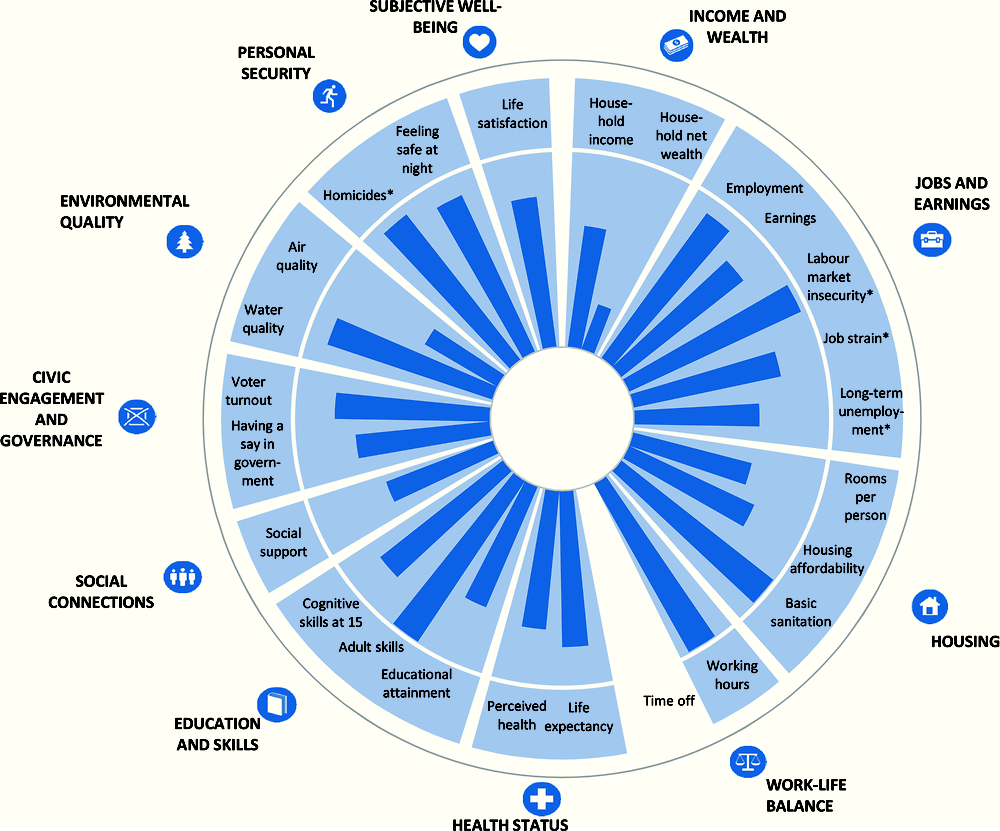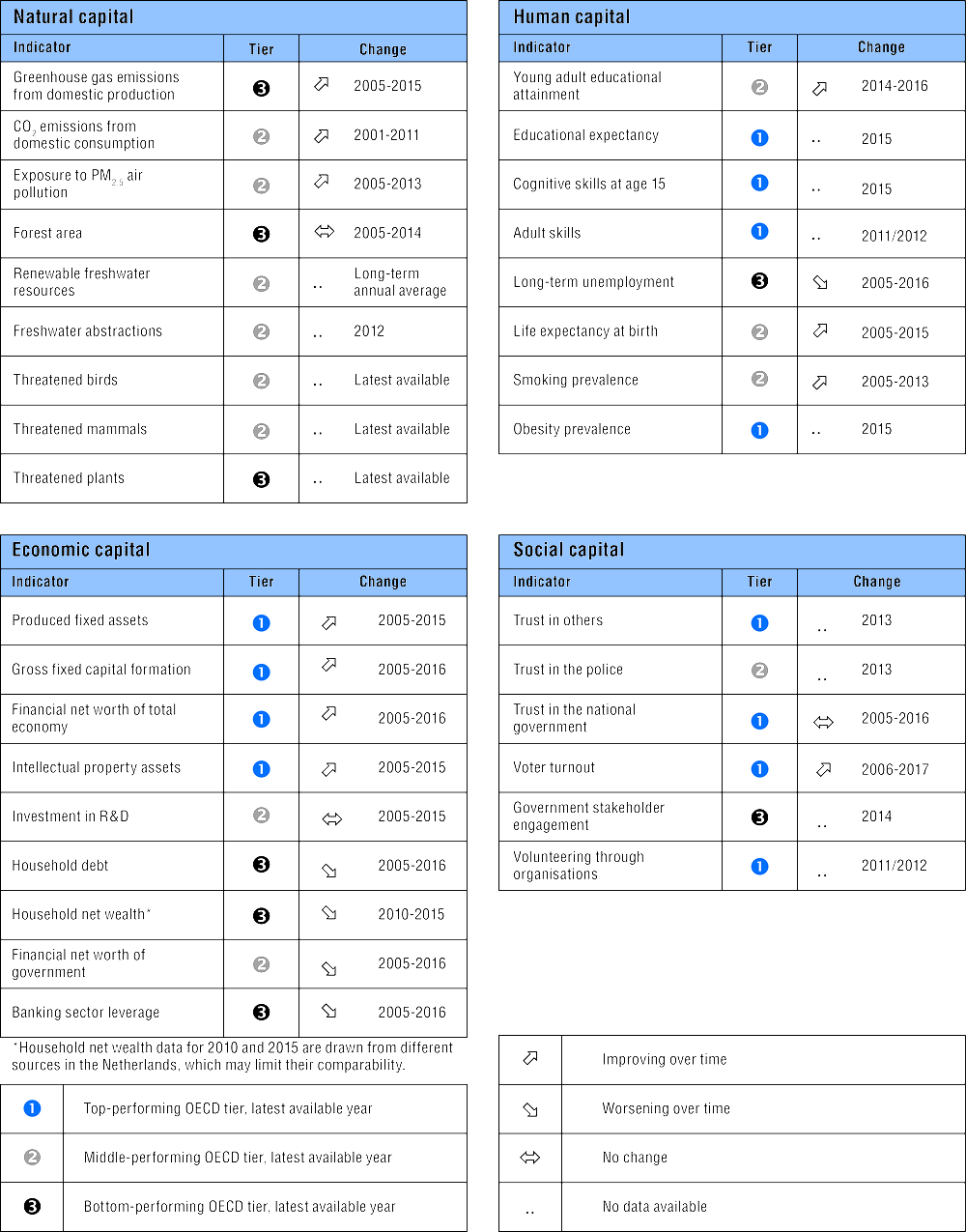How's life in the Netherlands?
In general, the Netherlands performs well across the OECD’s headline well-being indicators relative to the other OECD countries. Household net wealth was about half of the OECD average level in 2015, but average earnings (around 53 000 USD in 2016) are nearly 20% higher than the OECD average. The Netherlands benefits from comparatively low levels of both labour market insecurity and job strain. In addition, less than 1% of employees regularly work very long hours, the lowest share in the OECD. However, the long-term unemployment rate in 2016 stood at 3%, above the OECD average of 2.3%. Housing conditions in the Netherlands are good, but air quality (assessed in terms of exposure to PM2.5 air pollution) is close to the OECD average. 77% of the adult working-age population have completed at least an upper secondary education, compared to the OECD average of 75%, and the literacy and numeracy skills of Dutch adults are among the highest in the OECD. Personal security is also good, and life satisfaction is just above the OECD average level.


